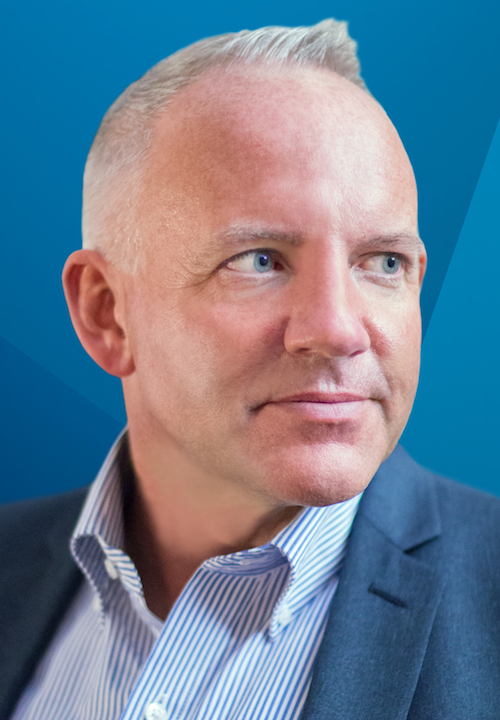For some time now, organizations have been acquiring their IT-related solutions as a service. With IT as an ongoing operating expense, companies aren’t forced to make a large capital investment when it comes time to upgrade systems—and as a result, technology can remain perpetually up to date. The next logical step, then, is to take the same operating expense (OpEx) shift to AV.

While logical, this transition is not happening as quickly as one might think, according to Julian Phillips, senior vice president, global workplace solutions at AVI-SPL, an AV design and integration firm headquartered in Tampa, FL. He attributes this to history: traditionally, AV was procured as a capital expense, and furthermore, it was linked to facilities and workplace services—not IT. “As we know, in the last three to four years, pretty much [all] ownership for AV has moved to IT,” he said. “Facilities and workplace services become the consumer of the technology, but the owner of it is IT, and these are the same people who are having conversations about buying Azure services, and Office 365, and Teams, and everything done on an as-a-service business model.” Still, many companies continue to view AV as a capital expenditure. “So we’re in this lag. We’ve got the people who own and operate it used to [the as-a-service] model … but [companies are saying], ‘we have to [purchase] it as a capital procurement. Moving away to a new model is not what we’re comfortable with as of now.’”
Related: Supporting Remote Work with Managed Services
This may be the case for many organizations, but not all. Mathew Slack, service designer, digital workspace at CIBC, a financial institution headquartered in Toronto, said that in moving into an AV-as-a-Service (AVaaS) model, tech managers need to examine the impact that traditional, capital-intensive AV technology investments have on the run costs for the business. “What’s really important is looking at the net present value of those costs, and [determining] if it’s better to spend those dollars today, or spread that cost over a longer period of time,” he said. An OpEx model, in many cases, could be the better path to take, he said.
AVaaS also lets organizations focus on what they’re supposed to be doing—and most times, that’s not AV. “[We’re] in the financial business—we’re not in the AV business,” Slack said. “It doesn’t make a lot of sense to build out a big AV team when it’s not our core business.” With an as-a-service model, AV is the supplier’s core business, and organizations like Slack’s benefit from this subject matter expertise.

One major advantage of adopting AVaaS is the flexibility it provides in lifecycle refresh planning. It is also a better model for keeping systems up to date, noted Stephen Jenkins, senior director of Intelligent Technology Solutions at Diversified, a global technology solutions provider headquartered in Kenilworth, NJ. “[In the] as-a-service model, we’re maintaining software revisions and firmware upgrades, so you’re staying on the latest and greatest software—similar to how you are on your mobile phone, or Office 365, or anything else,” he said. “Then, if you’re on a lifecycle refresh of three or five years, you can now align your as-a-service model to that so that when you’re looking at refreshing technology, you roll into another monthly recurring model that allows you to consume technology as a service.” Once again, an organization’s technology remains up to date, always.
For companies that are considering making the jump to AVaaS, Slack advises them to conduct thorough pre-planning. “It can’t be: you just install some hardware and then the service is kind of an afterthought,” he said. “You really need to invest the time and effort to really think about what’s important to the business, and what you need to see in a contract with the supplier for a service model.” He added that this is where developing room standards is important, in order to define what a company’s needs actually are—and what, then, should be included in the service-level agreement. “Once you’ve developed your standard offering, then that becomes very easy to repeat globally, or across the enterprise or organization.”

The SLA will also be tailored to the size and type of enterprise, Jenkins said. “[For] large enterprises, it’s going to be relatively custom, because the business drivers are so unique that you’re going to have to work together to create this [to reach] the business outcomes that you’re trying to achieve from this agreement,” he said. On the opposite end of the scale, small to mid-sized organizations tend to prefer a more standardized offering. “[We also have] an as-a-service model that takes a lot of the complexity out of it. We’ve identified the business outcomes we think are important [to our clients]; we understand remote connectivity, room standardization, remote monitoring, and we’ve packaged that all together so we can very easily help a company that doesn’t have the resources of a [large enterprise].”
Slack noted that for AVaaS to work, it’s important for AV tech managers to build strong relationships with their suppliers—and this has a lot to do with embracing IT. “AV is just another endpoint on the network,” he said. He urges AV tech managers to incorporate IT service management (ITSM) best practices and tools. “Embrace those, as they are how you develop a long-term, meaningful relationship between a client and the supplier. It allows you to be very tightly integrated with the organization that you’re working with.”
While the AVaaS model may not be as widely adopted as some expected it to be by now, Phillips believes that the COVID-19 crisis—and more specifically, the challenges it has presented to organizations across the globe—will drive companies to take the plunge. “One of the biggest arguments for the as-a-service as a business model is not necessarily cost reduction,” he said. “When people say, ‘If I pay for it over 36 months as a service, am I going to save money?’ Well, you might, but you might even pay a little bit more. But what you do get is agility,” he said. And, what these last number of weeks have demonstrated is that being able to adapt to the times is exactly what is required in the new normal. “I think agility is going to be the new operating procedure that all enterprises around the world have to live by. [The] invested infrastructure which I own and operate—and that is actually going to be difficult to upgrade and shift and change and what have you—actually becomes a legacy and a boat anchor for your organization. It doesn’t become a valuable asset.”

Brock McGinnis, managing principal at avitaas inc., an AV/IT consultancy based in Toronto, views as-a-service as a model for financial sustainability that enables organizations to continue to provide the latest audiovisual systems to users on an ongoing basis—rather than the latest AV in year one of the refresh lifecycle… and obsolete technology in year five.
“It’s not a sales pitch; these are compelling, logical arguments that are based on the way that companies have paid for the technology that have already occurred over the last decade in computing,” he said. “Even the movement to the cloud was almost less about ‘the cloud is this magical place,’ [and more] about ‘we can’t afford to continue to buy the storage and build the networks and the facilities that we need on premises.’ So how do we do this? How do we find a more cost-effective way to ensure that every day our users have the technology they need in order for the company to operate at optimum efficiency and production? Let’s bring AV into the same operating realm—the same level of importance, the same level of always current, always up-to-date, always on, always available, [like] every single one of our other business tools.”
Carolyn Heinze is a freelance writer/editor.